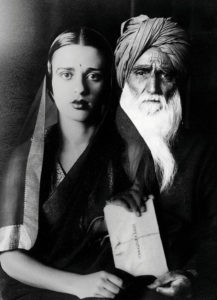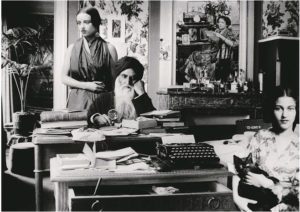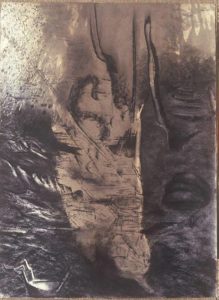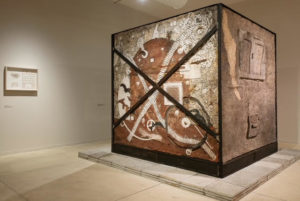By Shreya Chaudhuri

Vivan Sundaram, one of the most significant voices in the Indian contemporary art scenario, was essentially an artist-activist. Sundaram’s practice was pivoted around his artistic responses to political and historical events, engulfing both India and the wider world.
With a career spanning over six decades, Vivan Sundaram transformed the landscape of contemporary art in India. On March 29, Sundaram died following a brain hemorrhage in the national capital.

Born in 1943 in Shimla in the state of Himachal Pradesh of pre-Independence India, his grandfather Umrao Singh Sher-Gil (1870–1954) was an early photographer in India. His parents were Kalyan Sundaram, a civil servant and the first law secretary of post-Independence India, and Indira Sher-Gil, the sister of India’s most celebrated modernist artist, Amrita Sher-Gil. Sundaram was schooled at the Doon School and later went on to study painting at the Faculty of Fine Arts, Maharaja Sayajirao University of Baroda in 1965, followed by a post graduation at the Slade School of Art, London University in 1968. It was his stretch of time in London that coincided with the historic May 1968 protests in Paris which had an immense bearing on him and concurrently set the tone of Sundaram’s artistic moorings in the times to follow.

Vivan Sundaram’s expansive oeuvre is known to be multifarious, with creaseless experimentations in painting, drawing, sculpture, installation, photography and mixed media. Sundaram’s work layers history with memory and makes pertinent intersections while also archiving a keen poetic sensibility. His body of work while also permeating creative cultural resistance has been on occasion ephemeral, at times performative while also being site-specific in form. If one were to confine his practice to a certain style or broad thematic, the thread tying it all up would be his deep and sustained concern with the socio-economic and political issues grappling India as well as those which shook the world order.
Sundaram’s art blended with his activism, investigating political and historical happenings. After witnessing the May 1968 Paris demonstrations, a heavily inspired Vivan Sundaram took cue to organise both artist and student group protests during Indira Gandhi’s Emergency rule of 1975-77 after returning to India in 1971. From 1971, he worked with the Student Federation of India (SFI) and the All India Kisan Sabha, the farmers’ wing of the Communist Party of India (CPI). At this junction of his life, even though he was associated with the Baroda School of Art, his political involvement took precedence over his craft.

The multidisciplinary practitioner, often touted as India’s ‘first installation artist’ was known to be committed to humanist causes. Vivan Sundaram’s conceptual installation works of the 1990s marked a notable shift from his earlier paintings and also heralded a grand sweep for the Indian art world of the time. India, in the early 90s was in the grip of turbulent times grappling with economic liberalisation, a change in the mediascape as well as spurts of violence reported in the country. The shift in his practice is most famously embodied in his work titled Memorial (1993), which was a commentary on rising right-wing Hindu presence in the aftermath of the demolition of the 16th century Babri Mosque and the communal violence in Bombay (now Mumbai) that ensued soon after. The earliest example of Sundaram’s installation art is the Engine Oil series (1991), which references the assault of the US-led coalition forces on Iraq to gain supremacy over oil resources in the region.

His response to the Gulf War was a set of really powerful drawings on paper exploring unique materials like charcoal and engine oil. In his later years, he delved into the aesthetics and socio-cultural ramifications of urban waste and found objects.
One of Sundaram’s widely known works is Re-take of ‘Amrita’ (2001-2005), in which photographs of his family taken by his grandfather Umrao Singh Sher-Gil between 1904 to 1940s are decoupaged using Photoshop, to create a photomontage of slanted temporal realities with his family members across generations.
Vivan Sundaram’s long spanning career was embedded in the art community, fostering the art scene in India on a global platform while galvanising it around politics and history.



